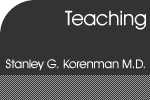

|
<< Previous Section | < Previous Page | Next Page > | Next Section >>
Bibliography (page 2 of 5) Grinnell, F. (1999). "Ambiguity, trust, and the responsible conduct of research." Sci Eng Ethics 5(2): 205-14. Ambiguity associated with everyday practice of science has made it difficult to reach a consensus on how to define misconduct in science. This essay outlines some of the important ambiguities of practice such as distinguishing data from noise, deciding whether results falsify a hypothesis, and converting research into research publications. The problem of ambiguity is further compounded by the prior intellectual commitments inherent in choosing problems and in dealing with the skepticism of one?s colleagues. In preparing a draft code of ethics for the American Society of Biochemistry and Molecular Biology (ASBMB), an attempt was made to take into account the ambiguities of practice. Also, the draft code adopted trust as its leading principle, specifically the importance of trust as a condition necessary for there to be science. During revision of the code, the focus on trust was changed. The new orientation was on trust as a consequence of carrying out science responsibly. By addressing the obligations necessary to engender trust, the ASBMB ethics code not only sets professional standards, but also makes a clear statement of public accountability. Gunsalus, C. K. (1998). "How to Blow the Whistle and Still Have a Career Afterwards." Sci Eng Ethics 4(1): 51-64. This paper is must reading for everyone entering science and teaching. The author uses her vast experience to report the necessity of whistle blowing and the difficult road that whistleblowers may tread despite much legal protection. She carefully teaches how to be an effective whistleblower, something that every member of a research team should read. Guterman, L. P., W. (2003). Former Graduate Student Sentenced to Prison for Faking Theft of Research. Chronicle of Higher Education, August 21. Here's a good one. A graduate student who had done no work for several years (good mentoring here) just reported all his notebooks stolen. He was quickly caught and jailed for 10 months for theft. (The notebooks didn't belong to him.) Gwynne, P. (1999). "Corporate Collaborations." The Scientist 13(11): 1, 6. Hagmann, M. (1999). "SCIENTIFIC MISCONDUCT:Researcher Rebuked for 20-Year-Old Misdeed." Science 286(5448): 2249a-2250. The seamy history of the availability of human growth hormone for Genentech to develop was elucidated when Peter Seeberg admitted to taking samples from his UCSF lab when he moved to Genentech and not indicating the source in a major subsequent paper. Subsequently Genentech built UCSF magnificent laboratories in payment for the stolen materials. Hagmann, M. (2000). "SCIENTIFIC MISCONDUCT: Panel Finds Scores of Suspect Papers in German Fraud Probe." Science 288(5474): 2106-2107. This news report characterizes the extent of fraudulent papers turned out by a German oncologist. The suspect papers were in numerous journals and will take years to recover from. They involved 52 papers and 357 apparent manipulations. Healy, B. (1993). "Sounding Board: The Dingell Hearings on Scientific Misconduct." N Engl J Med 329(10): 725-7. Dr. Healy, Secretary of HHS responds to congressional accusations against the ORI and NIH. It's good reading. Hoeksema, H. L., J. Troost, et al. (2000). "Fraud in a pharmaceutical trial." The Lancet 356(9243): 1773. The report illustrates how the Dutch handled a case of clinical research misconduct in which they reconstructed the data and determined that the investigator had surely fabricated the submitted data and sent mixed blood from a few persons rather than individual draws to the core lab. A useful example of quiet competent pursuit of the question. << Previous Section | < Previous Page | Next Page > | Next Section >> |
Chapter 8 Quick Links Malfeasance and Misconduct Definitions Process Whistleblowing Litigation, the New Approach to Research Management The Importance of Trust Cases Bibliography Chapter 8 Download (PDF) |